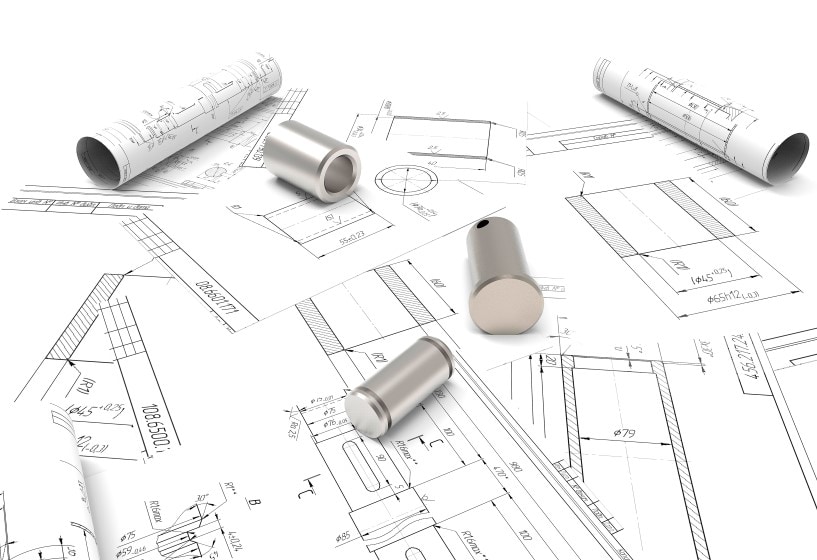
Published: September 2020
ISO has now revised and consolidated six pre-existing standards into one clear and consistent document covering all of the requirements for how to present lines on technical drawings. This blog post explains the details.
The BS EN ISO 128 series is a set of fundamental technical drawings standards that’s used globally. In 2020 the series – which had become rambling and unnecessarily complicated – was revised and consolidated into four new parts: Parts 1, 2, 3 and 100. These amalgamate all of the previous individual parts of the series into a clear and consistent suite of documents. Part 1 introduces the general principles of representation and covers fundamental requirements. Part 3 deals with views, sections and cuts. Part 100 is the index. Part 2 in the series was the last to be published (in August 2020) as BS EN ISO 128-2:2020 Technical product documentation (TPD) — General principles of representation — Part 2: Basic conventions for lines.
Types of lines
BS EN ISO 128-2:2020 establishes the types of lines used in technical drawings (e.g. diagrams, plans or maps), their designations and their configurations, as well as general rules for the draughting of lines. In addition, it specifies general rules for the representation of leader and reference lines and their components, as well as for the arrangement of instructions on or at leader lines in technical documents.
The standard also includes annexes providing specific information on mechanical, construction and shipbuilding technical drawings. Incidentally, for the purposes of these documents, the term “technical drawing” is interpreted in the broadest possible sense encompassing the total package of documentation specifying the product (workpiece, subassembly and assembly).
Revision and amalgamation
BS EN ISO 128-2:2020 is also a revision and amalgamation of six former parts of the ISO 128 series, all of which are superseded and withdrawn. They are: BS ISO 128-23:1999, BS ISO 128-22:1999, BS ISO 128-25:1999, BS EN ISO 128-21:2001, BS EN ISO 128-20:2001 and BS ISO 128-24:2014.
The main change in the 2020 version, aside from the amalgamation of these six former parts, is that the newly-revised standard introduces a hierarchy for overlapping lines. Another change worth mentioning is that the rules of application specific to various technical fields (i.e. construction technical drawings, mechanical engineering technical drawings and shipbuilding technical drawings) are now provided in individual annexes. Information on preparation of lines by CAD systems is also provided in an annex.
Manufacturing companies
The standard is written for manufacturing companies, mechanical engineering organizations, any heavy industry that uses engineering drawings, and design offices and consultancies that need the basic requirements for the design and specification of their products on technical drawings (and/or on 3D models).
The sectors in which the standard is typically used include aerospace, defence, automotive, nuclear, rail and shipbuilding. It can be used for traditional 2D manual drawings or for 3D modelling on CAD systems.
The standard is valuable because it simplifies and clarifies the creation of technical drawings, thus greatly reducing the likelihood of misinterpretation. Ultimately, therefore, its use can facilitate trade, increase people’s trust in your technical drawings and better manage your risk.Plus this new consolidated standard will be much more efficient to work with. Therefore, anyone whose work involves preparing technical drawings should now be using the new BS EN ISO 128-2:2020.